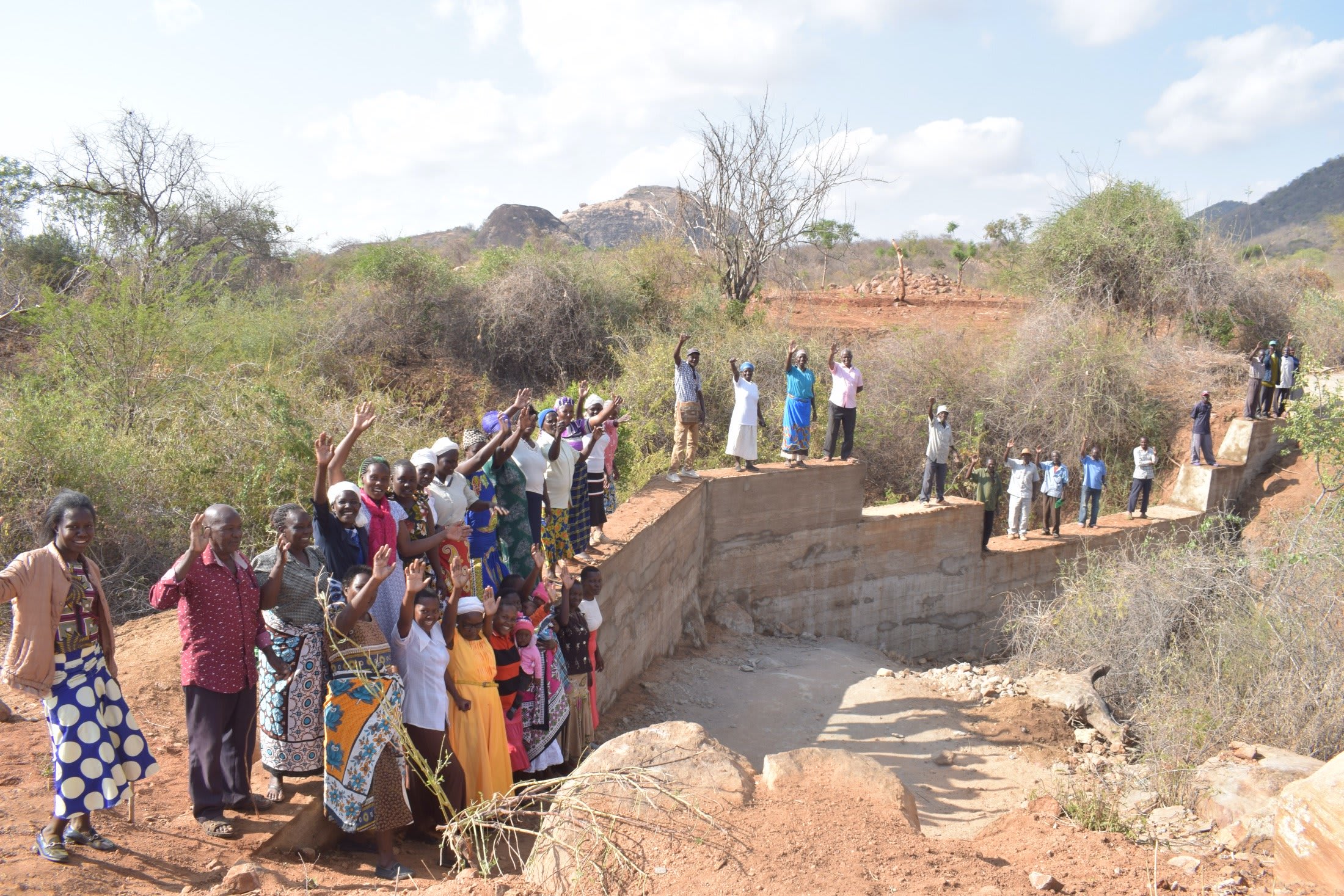The community members of Wamwathi and Syunzale villages are faced with very long days due to their pursuit of clean drinking water which often hinders them from conducting any other activities. Depending on which has water, they go to either the Syiluluku rock catchment located two kilometers away or Wamwathi Spring found four kilometers away. More often than not, fetching water falls on the women.
Some people leave as early as 3 am to get water, said Andrew Munyoki to our field staff. This is done to avoid waiting in the long lines that build up during the day since there are only a couple sources for a community of 1,020. But at best, a single source can serve only 500 people.
Once the water chore is completed, they walk back home to conduct household duties and prepare their children for school. However, at times the students attend school without bathing or having a meal.
"If one has no donkey, life gets worse, because one has to go to the water source for very many rounds," explained Mr. Munyoki.
As a result, a whole day can be spent solely on fetching water.
Wamwathi Community is found in Kitui County of southeast Kenya. It is a semi-arid region that experiences periods of drought - a situation that is only getting worse due to climate change. The households are sparsely populated with the homesteads existing two or more kilometers apart from each other. The area is rural and underdeveloped. Most structures are built of mud and iron sheet roofing. A few community members reside in stone houses. Its vegetation is thronged by indigenous bushes and a few families farm maize and sorghum. The area has very few markets and the school which most children attend is located about two kilometers from the village.
The average family is eight people and the primary business conducted in the area is that of beekeeping. They have set up many beehives on trees and they harvest honey on a daily basis. For the better-off families, the honey is supplied to the market areas by means of motorbikes. Others make a living participating in informal labor, such as carrying water for families or working as motorbike drivers.
The pursuit of water is economically draining for this community. Time spent fetching water keeps them from carrying out any income-generating activities. Hygiene and sanitation maintenance is impossible due to water scarcity. This also causes students to miss school at times. During the dry seasons, unscrupulous water vendors overprice water which becomes very costly for them.
"Life is very difficult. We are forced to drink unclean water as we have no alternatives which expose one to risks of contracting waterborne diseases such as dysentery and typhoid," said Mr. Munyoki.
A sand dam is a long term solution for the water problem that the community is currently facing. The members will walk for shorter distances in a bid to access clean drinking water and access it more easily through the adjacent hand-dug well installed at the same time. This project gives the community ownership of the water supply which in return boosts their chances of financial security.
Our main entry point into Wamwathi Community is the Syiluluku Rock Catchment Self-Help Group, which is comprised of 40 farming households that are working together to address water and food scarcity in their region. These members will be our hands and feet in both constructing water projects and spreading the message of good hygiene and sanitation to everyone.
Once the project is completed, the community members are granted the responsibility of handling and managing the water project. They can set the rules and regulations for rationing the water supply, user restrictions, and the rates at which they will sell the water.
Sand Dam
After the community picked the spot, our technical team went in and proved the viability by finding a good foundation of bedrock. Now, our engineers are busy drawing up the blueprints. We estimate the dam will be 20.4 meters long and 5 meters high.
We are unified with this community to address the water shortage. As more sand dams are built, the environment will continue to transform. As the sand dams mature and build up more sand, the water tables will rise. Along with these sand dams, hand-dug wells (check out the hand-dug well being installed next to this dam) will be installed to give locals a good, safe way to access that water.
With these projects, clean water will be brought closer to hundreds of people in Wamwathi Community.
Training
The lack of access to water impacts community hygiene and sanitation levels. Most households have poor compound hygiene and their general hygiene and sanitation standards are low.
As a result of water scarcity, we rarely wash our latrines. At times we lack water for personal hygiene," said Martha Muisho.
"Bathing is conducted intermittently and washing clothes is also problematic because it requires so much water. The water is often used sparingly in a bid to conduct all household duties."
In relation to this, they need improvement on compound hygiene, effective water treatment methods, handwashing training, soap making lessons and knowledge of disease transmission routes. The members of this group seem to have little knowledge on hygiene and sanitation. This also exposes them to risks of contracting diseases such as cholera, typhoid, diarrhea and stomachaches.
We will hold hygiene and sanitation training sessions with Syiluluku Rock Catchment Self-Help Group, which are also open to non-members. These will teach about important hygiene practices and daily habits to establish in the community at the personal and household levels. Taking good care of self and environment will make for a healthy community.

 Sand Dam
Sand Dam
 Rehabilitation Project
Rehabilitation Project










































